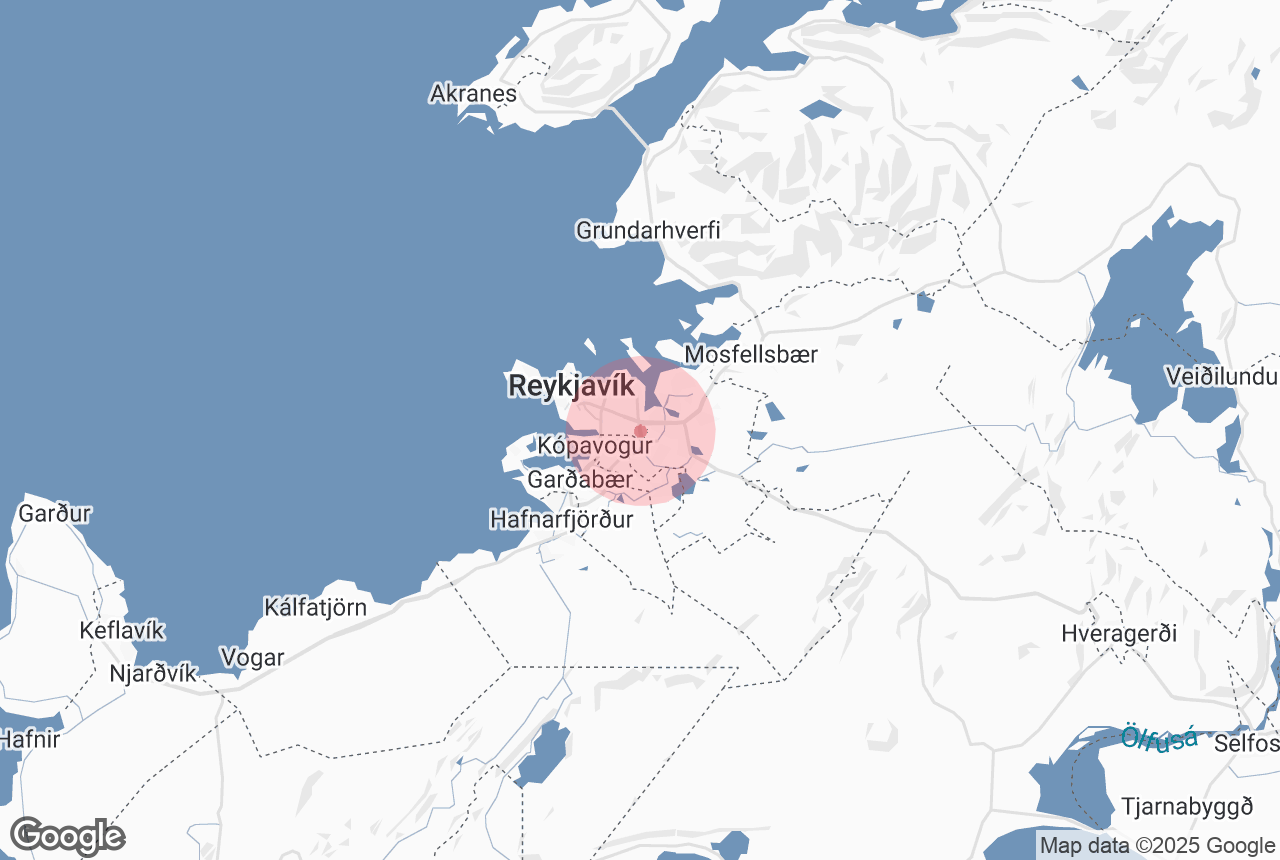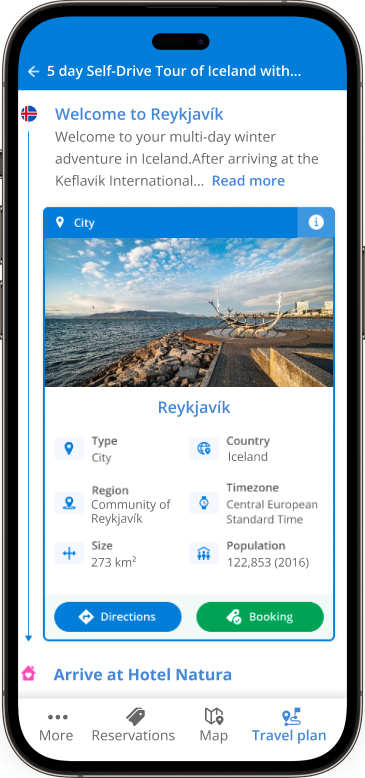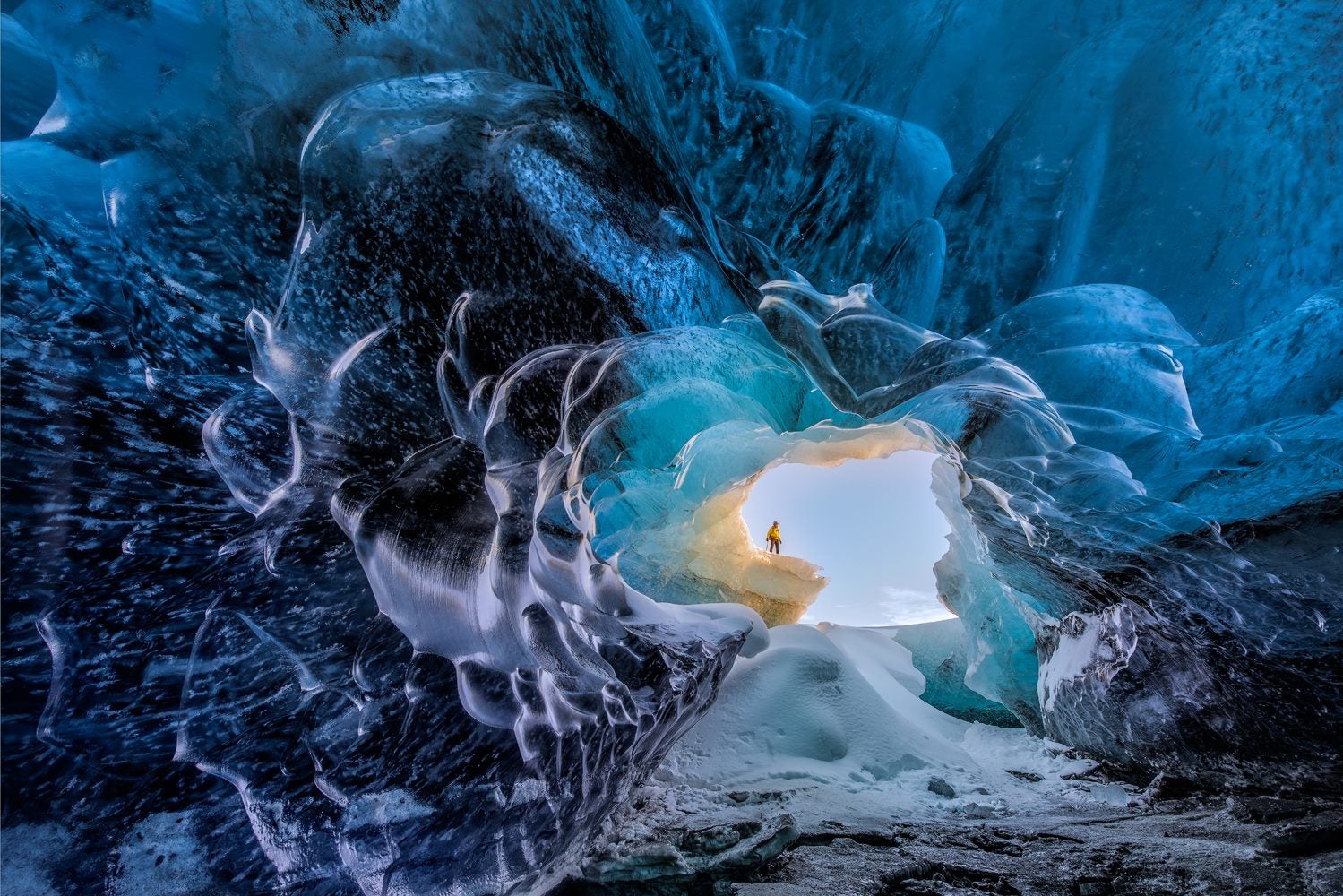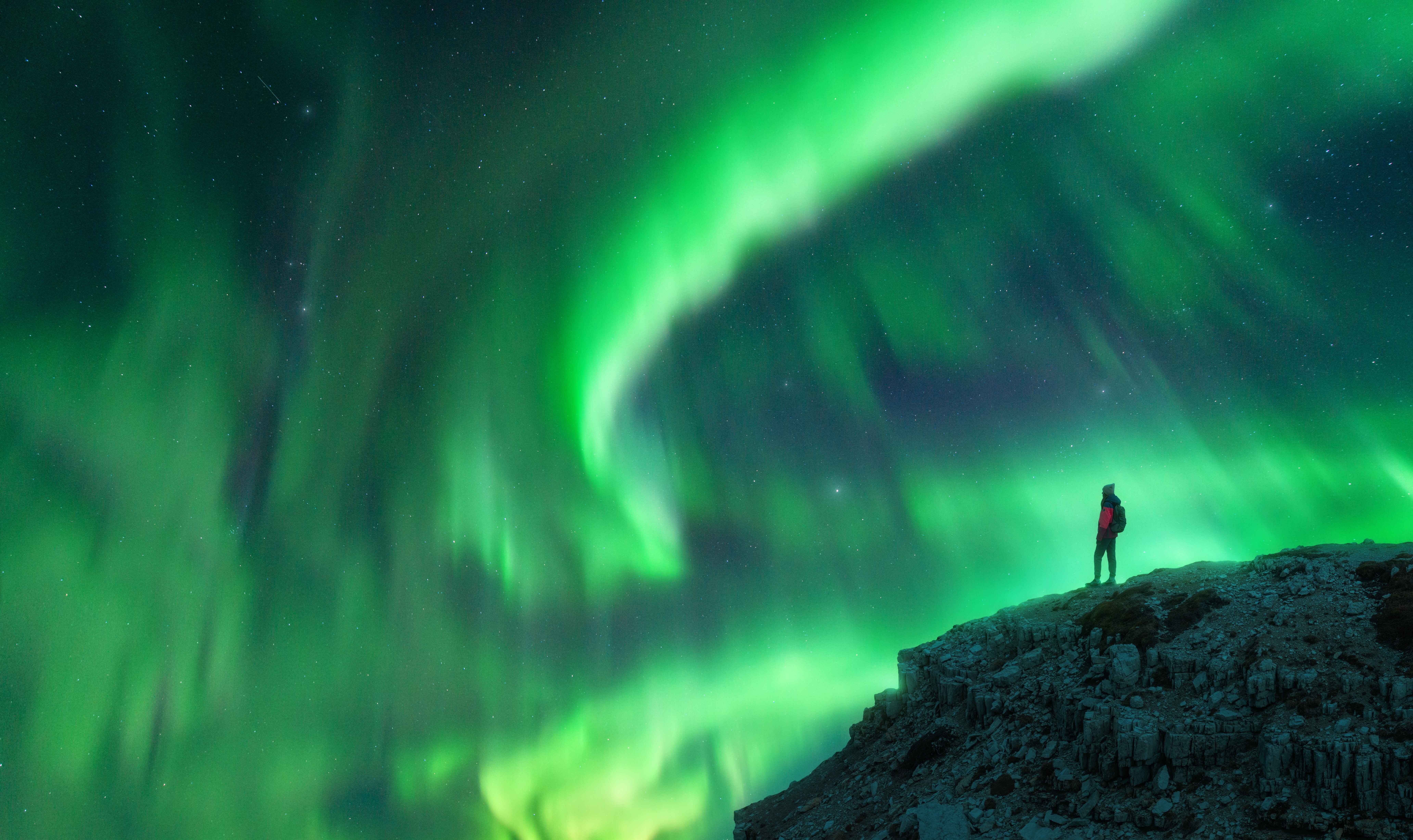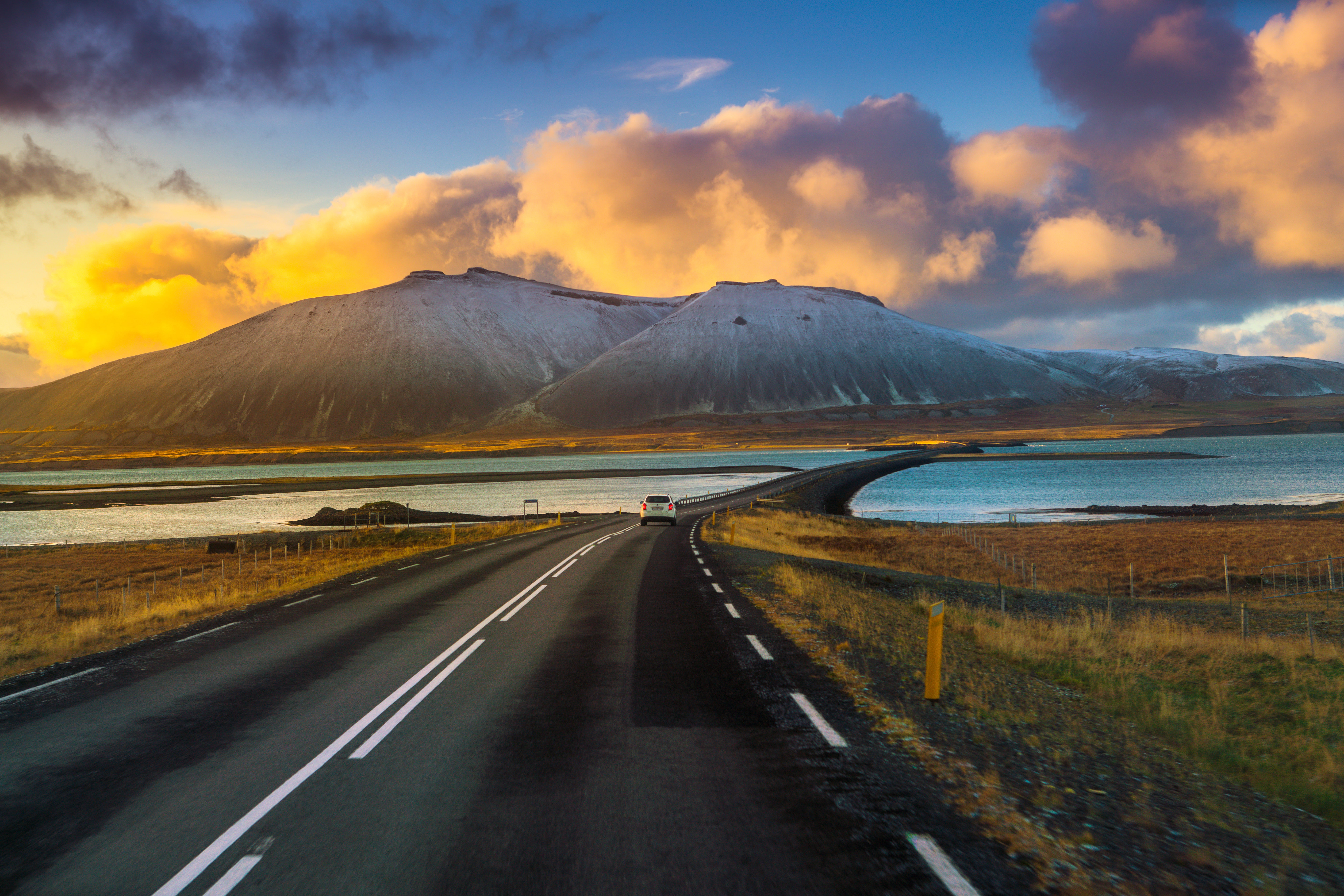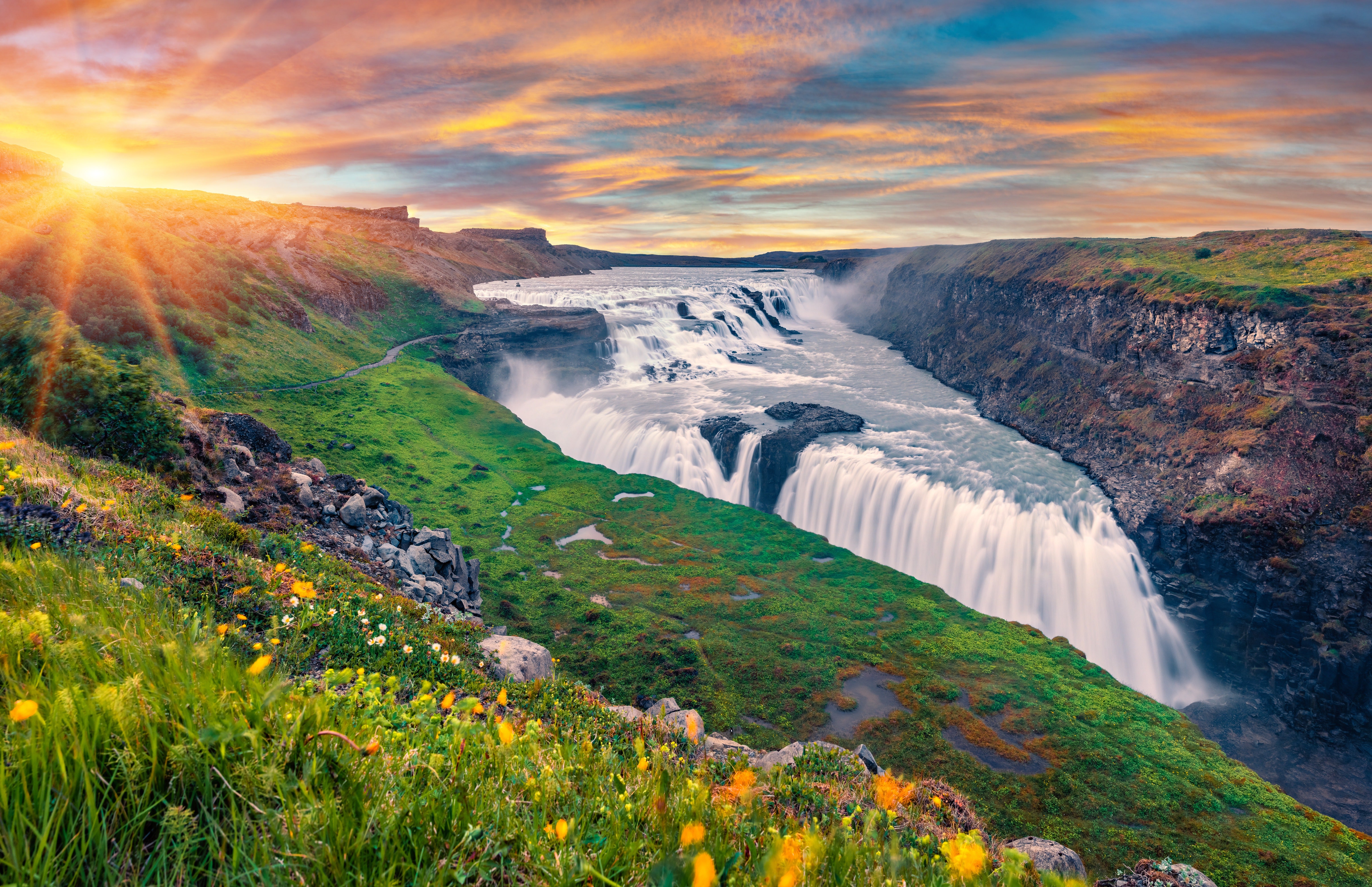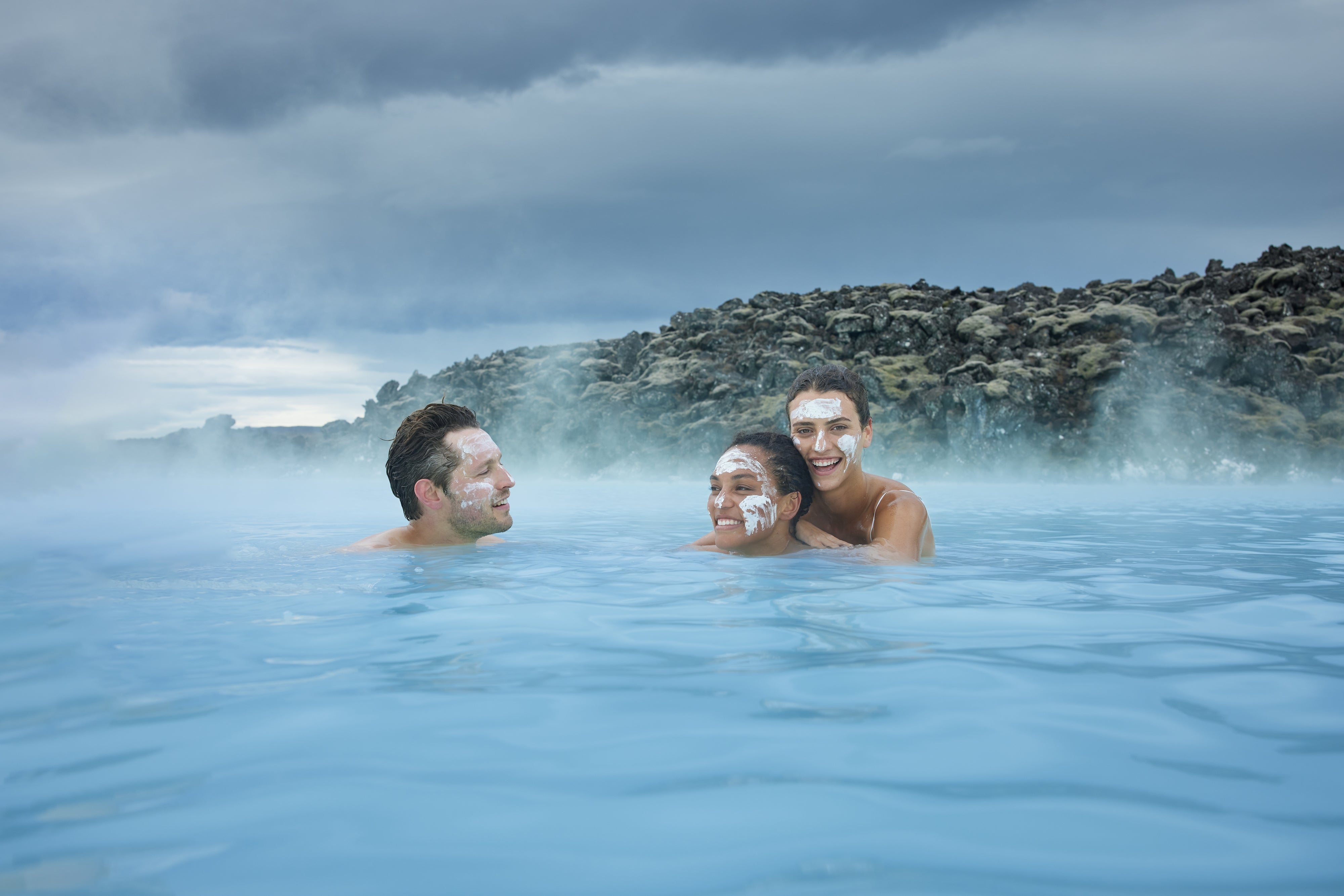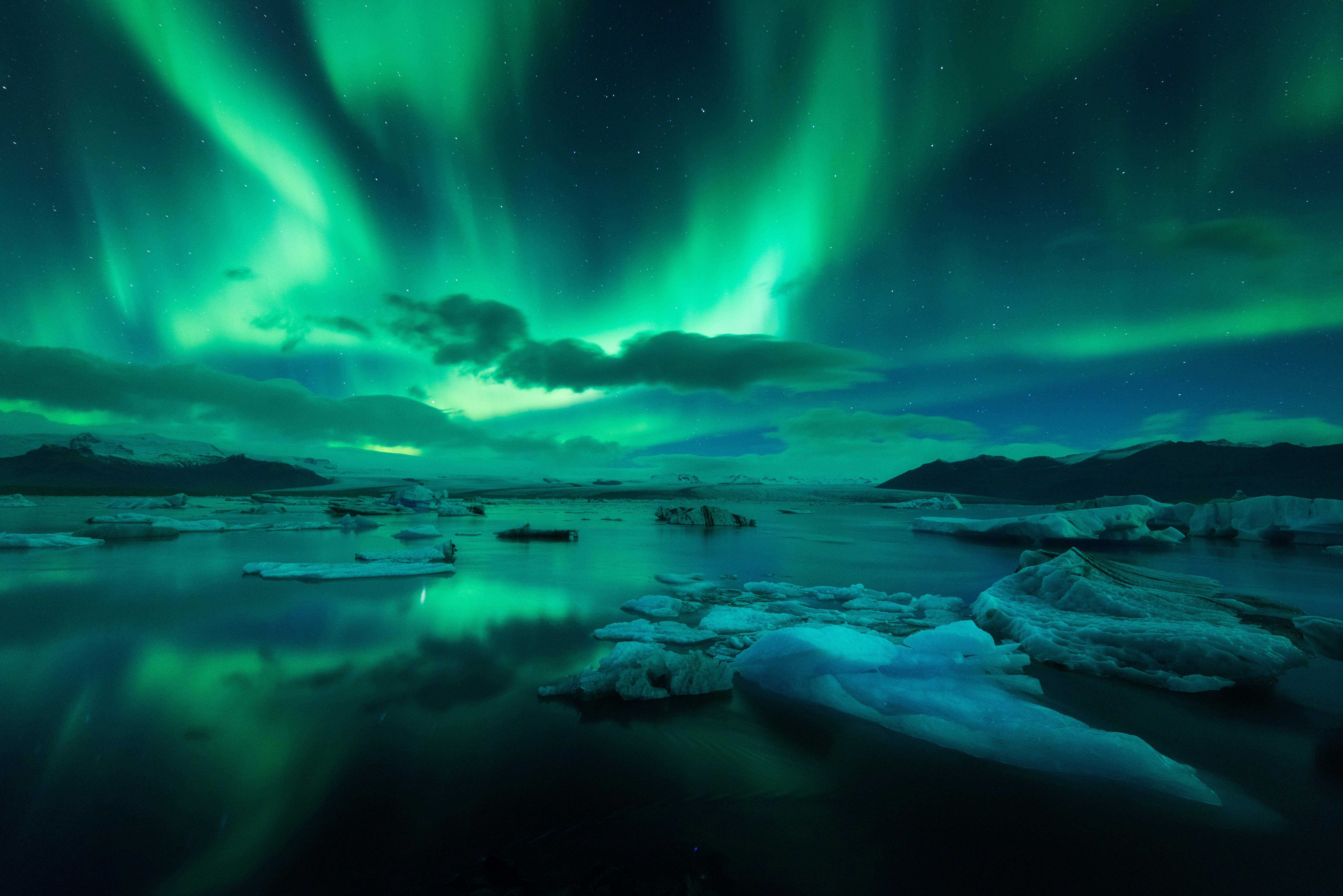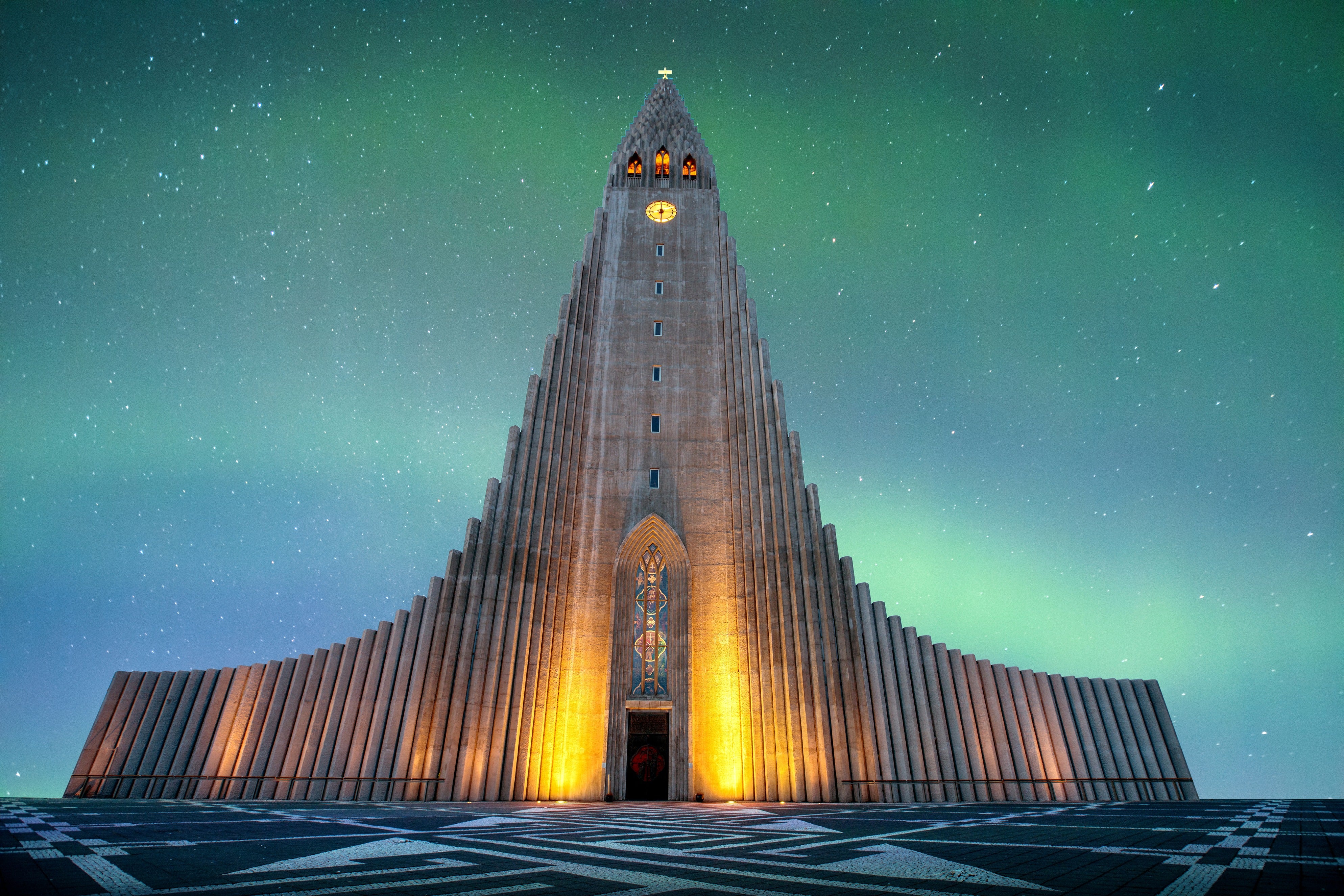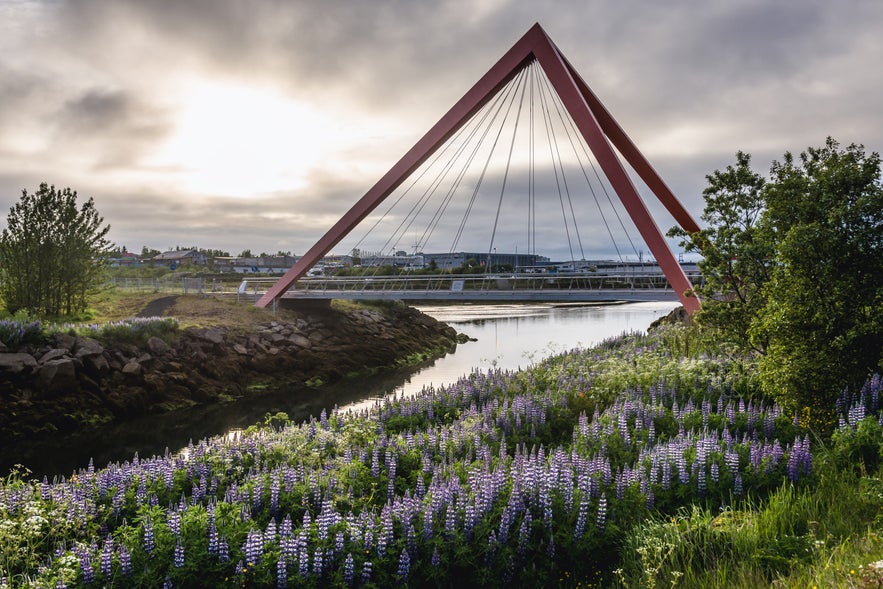
As one of the largest green areas in Reykjavik and one of the lush forests in Iceland, Ellidaardalur Valley, also known as "Elliðaárdalur" in Icelandic, is a true local favorite that often flies under the radar for tourists.
The valley is full of natural life, with salmon in the river, birds in the trees, and native flora lining the trails. Small waterfalls add to the landscape’s charm, while well-kept paths invite both hikers and cyclists. You’ll even find scattered World War II remnants tucked among the greenery, giving the area a subtle historical edge.
Why You Can Trust Our Content
Guide to Iceland is the most trusted travel platform in Iceland, helping millions of visitors each year. All our content is written and reviewed by local experts who are deeply familiar with Iceland. You can count on us for accurate, up-to-date, and trustworthy travel advice.
Located in southwest Iceland, Ellidaardalur Valley sits within the Reykjavik city area, just 10 to 15 minutes from the center. Its easy access and natural beauty make it a unique contrast to the hustle and bustle of the city.
Key Takeaways
-
A Hidden Natural Gem: Ellidaardalur Valley is a peaceful green space in Reykjavik with a glacial river, lava fields, forest trails, and small waterfalls.
-
Easy City Access: Located just 10–15 minutes from downtown Reykjavik, the valley is reachable by car or public bus with several nearby stops.
-
Diverse Activities: Visitors can enjoy hiking, cycling, birdwatching, salmon fishing (with permit), picnicking, and exploring WWII remnants.
-
Best Time to Visit: The valley is beautiful year-round. Summer is best for trails and wildlife, while winter offers snow-covered views and northern lights.
Features of the Ellidaardalur Valley
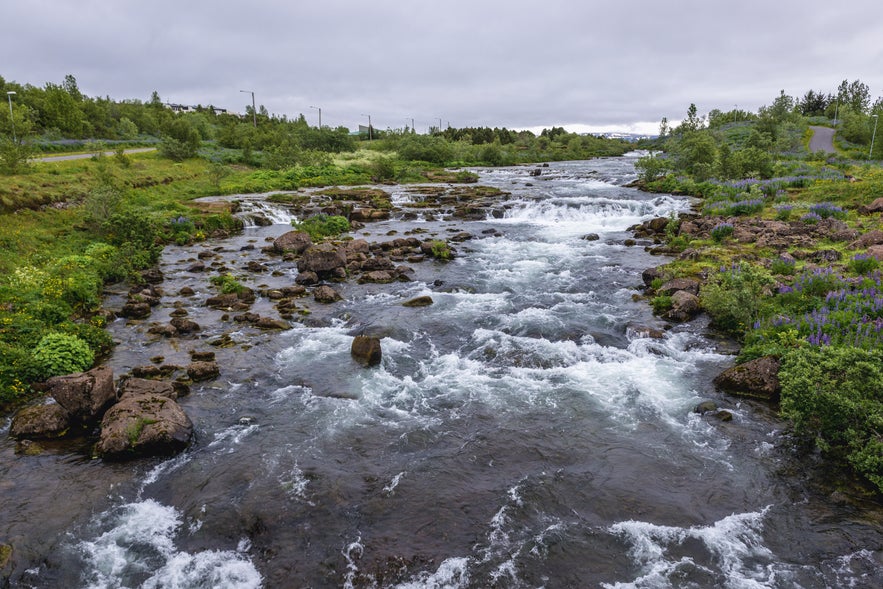
Ellidaardalur Valley is a striking geological and ecological landscape shaped by the powerful forces of volcanic activity and glacial history. The valley lies atop the 4,500-year-old Leitahraun Lava Field, which originated from a crater called Leitin in the Blue Mountains (Bláfjöll) volcanic area.
This eruption sent mostly pāhoehoe lava flowing down through Sandskeid Plateau (Sandskeið) and into Lake Ellidavatn, where it spread across the area that now forms the base of the valley. As the lava cooled, it created a rugged foundation of gray basalt, which defines much of the terrain today.
Over time, the Ellidaa River carved through this ancient lava field, shaping the valley’s contours and contributing to its fertile soil.
The river’s path has also exposed sedimentary layers from the end of the Ice Age, including coastal deposits left behind when sea levels were higher. These are especially visible in the lower part of the valley, where large coastal terraces mark the landscape.
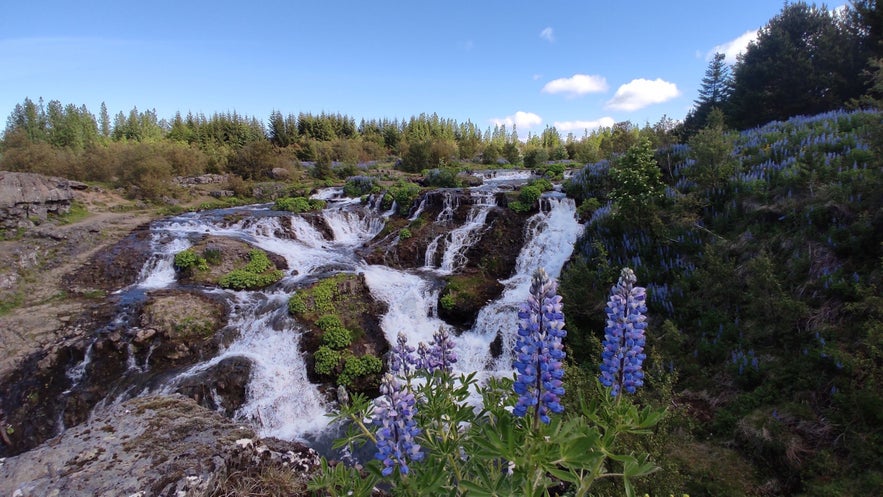 Key Natural Highlights:
Key Natural Highlights:
-
Ellidaa River: Spring-fed and crystal clear, the river flows from the Blafjoll mountains through Lake Ellidavatn and across the valley. Its steady erosion of the lava has created small gorges, rich aquatic habitats, and a peaceful atmosphere that defines the area.
-
Kermoafoss Waterfall (Kermóafoss): One of the most scenic natural features in the park, this multi-tiered waterfall is tucked into the forest and easily accessible by trail. Formed where the river cuts through lava layers, it’s a quiet but dramatic reminder of the valley’s volcanic past.
The valley’s unique topography—formed by the meeting of lava and water—has also created ideal conditions for plant life. Nearly 320 species of vascular plants grow here, including birch, spruce, pine, and rowan, along with vibrant wildflowers that flourish in summer.
Reforestation since the early 20th century has also transformed the once barren lava plain into a thriving green corridor.
History of Ellidaardalur Valley
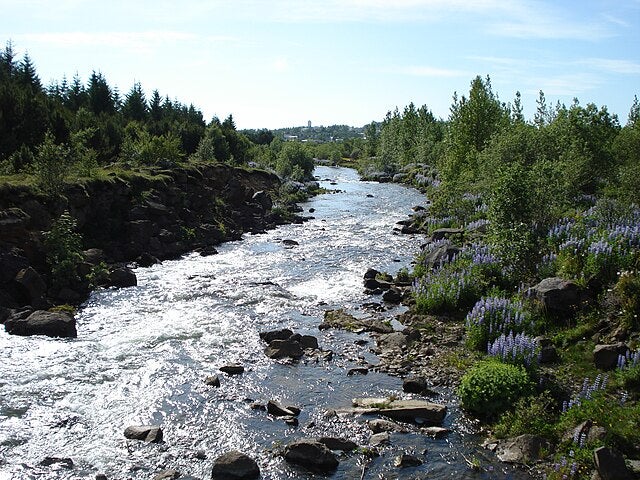
Ellidaardalur Valley has long played a role in Reykjavik’s growth, serving as a hub for industry, innovation, and outdoor life. The valley’s story is closely tied to the Ellidaa River, whose flowing waters supported early production, powered the city, and helped shape the landscape as it’s known today.
Early Industry and the New Enterprises
In the mid-18th century, during the period of the New Enterprises (Innréttingarnar), Ellidaardalur Valley became a center for wool processing. The river current powered a fulling mill, while a dyeing house and tannery were also built nearby. These facilities marked some of Reykjavik’s earliest industrial activity and made use of the valley’s natural resources.
First Crossings and Infrastructure
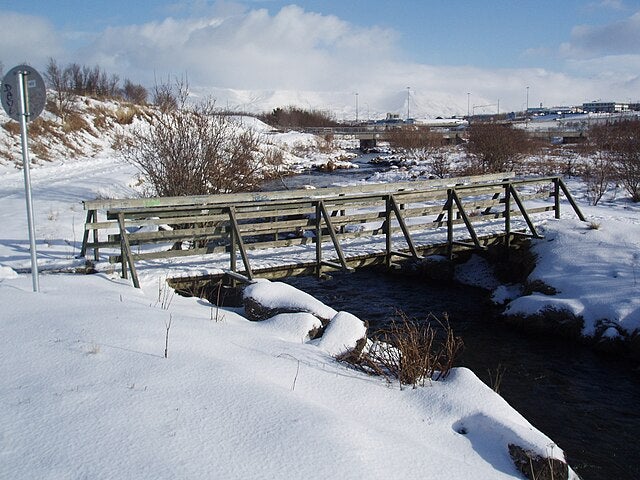 The first bridge across the Ellidaa River was constructed in 1883, improving access to the valley. Today, over 20 bridges span the river, most designed for pedestrians, linking walking paths and neighborhoods on either side.
The first bridge across the Ellidaa River was constructed in 1883, improving access to the valley. Today, over 20 bridges span the river, most designed for pedestrians, linking walking paths and neighborhoods on either side.
Hydropower and Energy Production
In 1906, the city of Reykjavik acquired the Ellidaa River to harness its hydroelectric potential. Drinking water was first drawn from the river in 1909, and the first power station in the valley was commissioned in 1912. A larger hydroelectric plant was built in 1921, making it Iceland’s second hydroelectric facility, and it remains in operation today.
The main dam, located near the old Arbaer farm (Árbær farm), is still active during winter. During the warmer months, the river flows freely through the valley, and the upper reservoir area, including Blasteinsholmi, returns to its natural state.
Geothermal areas in the valley are also tapped for district heating.
Outdoor Life and Land Use
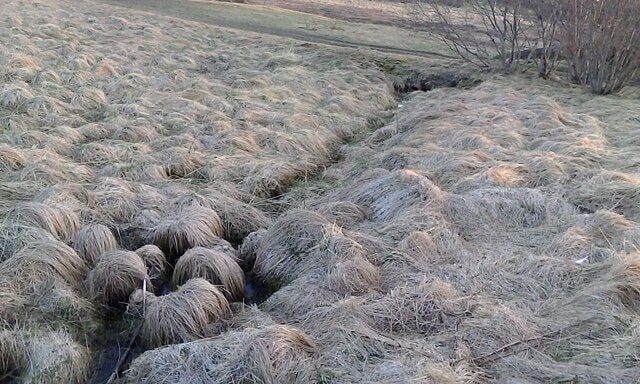
Long before the city expanded eastward, Ellidaardalur Valley was a popular countryside retreat. Locals built summer cottages and small farm structures throughout the valley. Farming was common, mainly sheep grazing, haymaking, and horticulture. Grazing continued until free-range livestock was phased out in the 1960s.
As neighborhoods like Arbaer (Árbær) and Breidholt were developed between the 1960s and 1990s, most of the cottage settlements disappeared. However, the valley’s legacy as a place for outdoor recreation continues to this day.
Top Things To Do in Ellidaardalur Valley
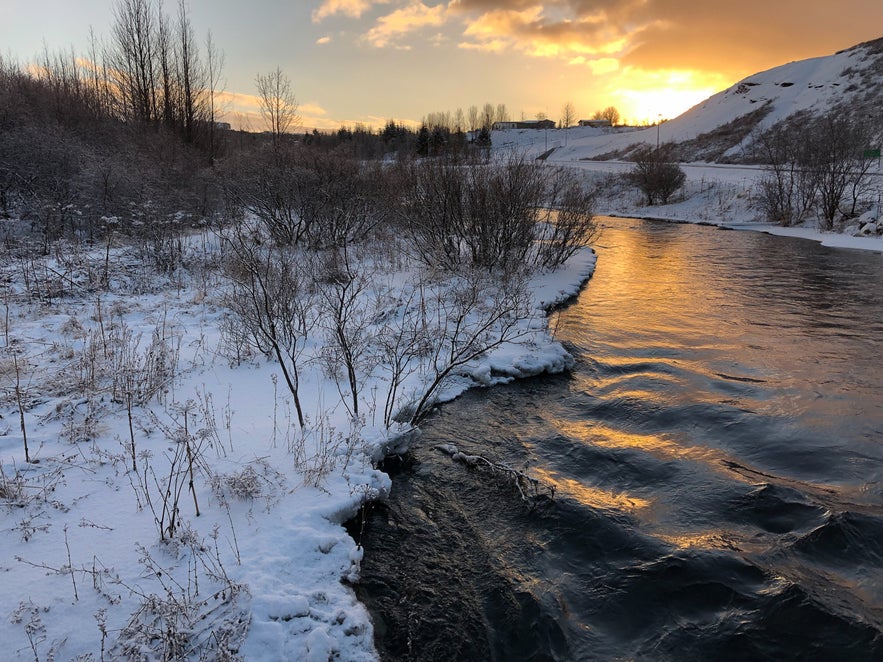 Despite its peaceful setting, Ellidaardalur Valley offers plenty to do, especially for nature lovers, anglers, birdwatchers, and active travelers. Below are some of the top ways to enjoy this unique green space in Reykjavik.
Despite its peaceful setting, Ellidaardalur Valley offers plenty to do, especially for nature lovers, anglers, birdwatchers, and active travelers. Below are some of the top ways to enjoy this unique green space in Reykjavik.
Go Salmon Fishing in a Capital City River
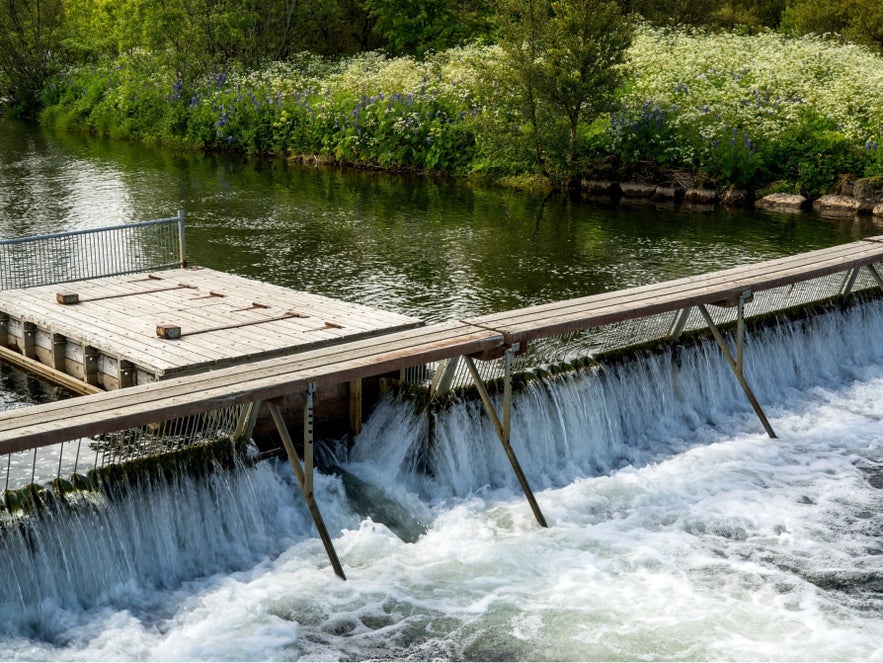 Want to go fishing in Iceland? Fishing for salmon in the heart of Reykjavik is a rare experience, and the Ellidaa River is considered one of Iceland’s best urban salmon rivers. Each summer, around 2,500 salmon run upstream, with sea trout, Arctic char, and the occasional eel also found in the waters.
Want to go fishing in Iceland? Fishing for salmon in the heart of Reykjavik is a rare experience, and the Ellidaa River is considered one of Iceland’s best urban salmon rivers. Each summer, around 2,500 salmon run upstream, with sea trout, Arctic char, and the occasional eel also found in the waters.
Salmon fishing has been practiced here for centuries and was once controlled by the King of Denmark before the city of Reykjavik purchased the river in 1906.
Important: Fishing is not open to the general public. You’ll need a valid permit, typically obtained by joining Reykjavik’s fly-fishing club and entering their annual lottery.
Even without a rod, it’s fascinating to walk the riverbanks and possibly catch a glimpse of a skilled angler landing a salmon.
The river is also an important spawning ground, and migrations are monitored by a counter near the old power station.
Spot Wildlife and Watch Birds
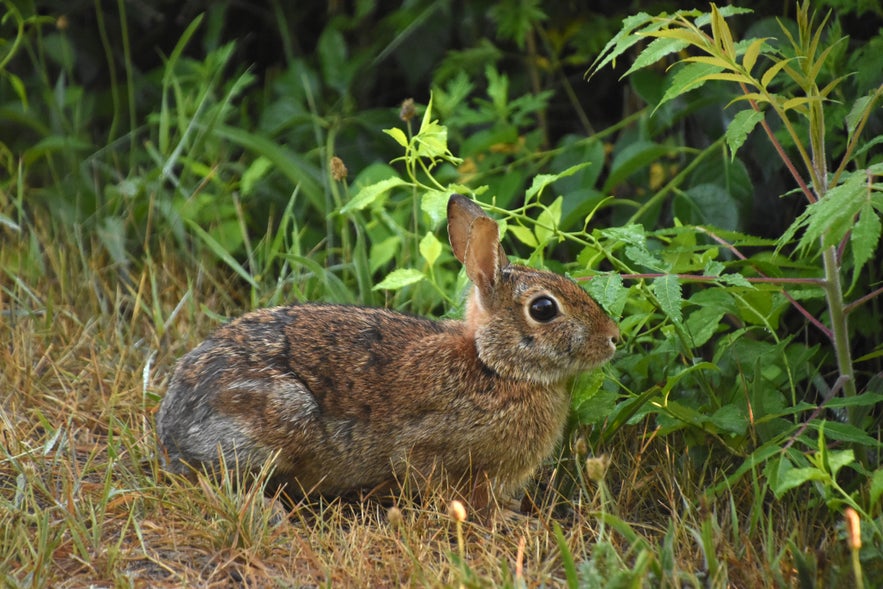
Ellidaardalur Valley is one of the best places in Reykjavik for spotting wildlife. Wild rabbits are a common sight year-round—descendants of escaped pets or farm animals that have adapted to the Icelandic climate. Minks are also occasionally seen in the area.
The birdlife here is especially rich. Around 25 species nest in the valley, with many more passing through during migration. Along the river and wetlands, you might see greylag geese, mallards, swans, teals, tufted ducks, and red-breasted mergansers.
Waders like oystercatchers, golden plovers, and snipes nest in the open meadows, while redwings, blackbirds, starlings, and goldcrests are often spotted in the forested areas. Winter brings species like ravens and goosanders, while harlequin ducks are sometimes seen in the river’s upper reaches.
These birds thrive thanks to the river’s healthy ecosystem. Fed by spring water from Ellidavatn Lake, the river supports abundant invertebrate life—plankton, larvae, water mites, and other small organisms—that serve as a food source for both fish and birds.
Note: For more insights about local birdlife, check out this complete guide to birds in Iceland.
Walk or Cycle the Trails
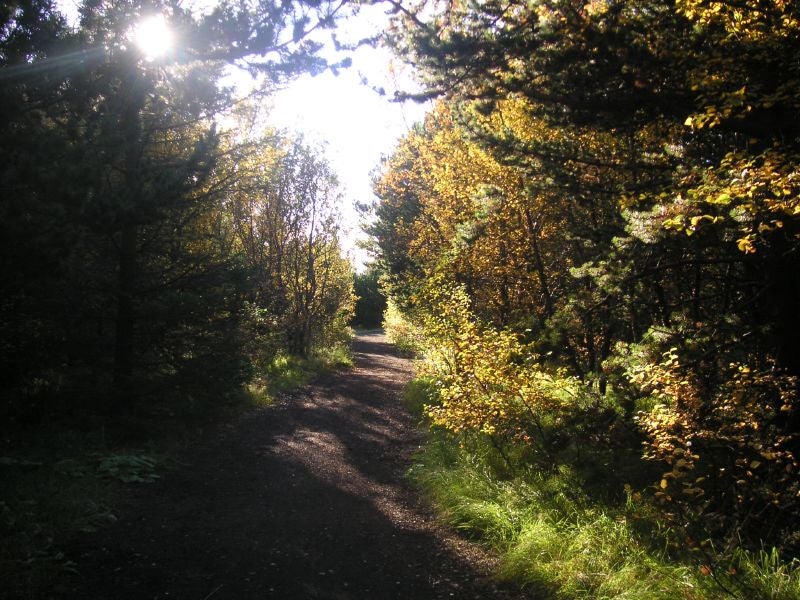
Ellidaardalur Valley offers around 6 miles (10 kilometers) of scenic trails, perfect for walking, running, or cycling. The paths vary from smooth paved routes to gravel and single-track sections, leading you through peaceful forests, across bridges, and along the winding river.
As you move through the valley, you’ll notice how the landscape shifts. One moment you’re passing open meadows, the next you’re shaded by thick woodland.
Along the way, you’ll see tall birch, willow, rowan, and spruce trees—many of them planted during Reykjavik’s long-standing reforestation efforts. In spring and summer, the trails burst with color as wildflowers bloom across former farmland, and garden species that have spread naturally now grow freely along the path edges.
Keep an eye out for soft moss carpets, seasonal berries, and the wetland area at Blasteinsholmi above the Arbaer dam (Árbær dam), which floods in parts of the year and creates a unique habitat right in the middle of the valley.
Note: Parts of the upper trails are also marked as equestrian routes, so don’t be surprised if you spot a local riding through on horseback. However, Iceland horseback riding is not a common tourist activity in the valley (yet!).
Explore WWII Remnants
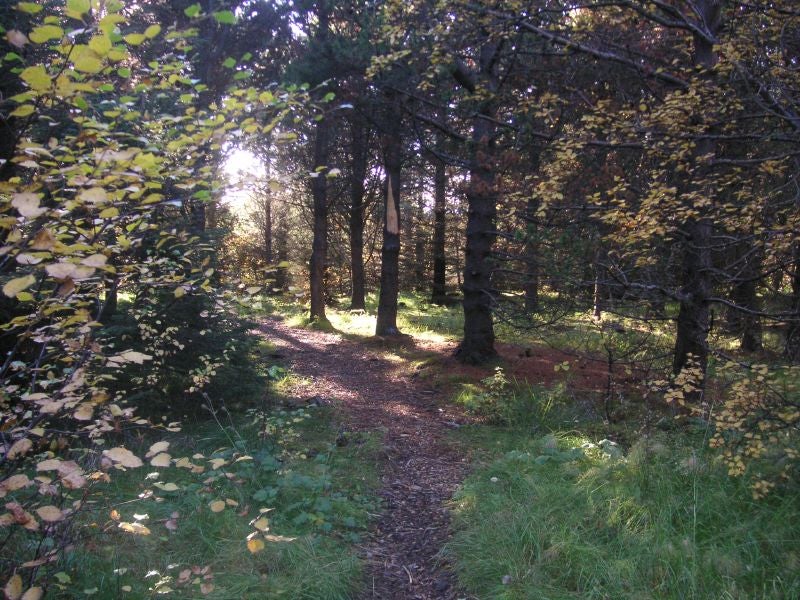 During World War II, several army barracks were built in Ellidaardalur Valley, as part of Iceland’s strategic role in the North Atlantic. At the time, British and American forces were stationed in Reykjavik, and the valley's open terrain made it a practical site for temporary military structures. Today, the war is long gone, but you can still find subtle traces of this history.
During World War II, several army barracks were built in Ellidaardalur Valley, as part of Iceland’s strategic role in the North Atlantic. At the time, British and American forces were stationed in Reykjavik, and the valley's open terrain made it a practical site for temporary military structures. Today, the war is long gone, but you can still find subtle traces of this history.
The most visible remains are near the bottom of Artunsbrekka Hill (Ártúnsbrekka), where underground bunkers and concrete foundations lie partially hidden among the trees. Overgrown and quiet, these ruins offer a fascinating contrast to the valley’s otherwise peaceful landscape.
Tip: Check out the top-rated cultural tours in Iceland for deeper insights into the country’s rich culture and history.
Enjoy a Family-Friendly Nature Break
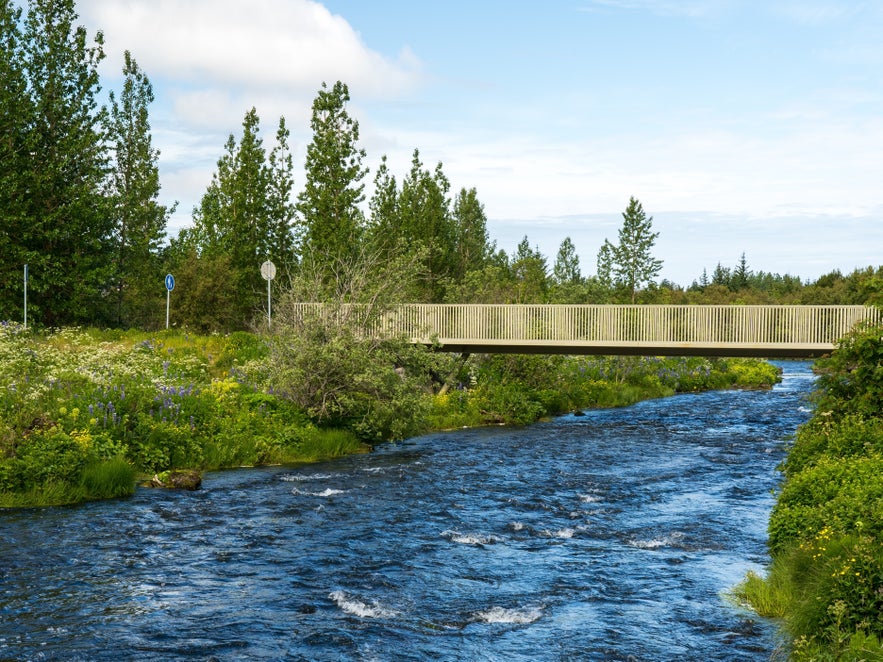 Ellidaardalur Valley is a popular spot for families who want to save money while traveling in Iceland and outdoor enthusiasts looking to spend time in nature without leaving the city. The valley offers picnic areas, benches, and wide grassy spaces perfect for laying out a blanket.
Ellidaardalur Valley is a popular spot for families who want to save money while traveling in Iceland and outdoor enthusiasts looking to spend time in nature without leaving the city. The valley offers picnic areas, benches, and wide grassy spaces perfect for laying out a blanket.
There is a playground near Geirsnef, along with open areas and nearby sports fields where kids can play and explore.
How To Get to Ellidaardalur Valley
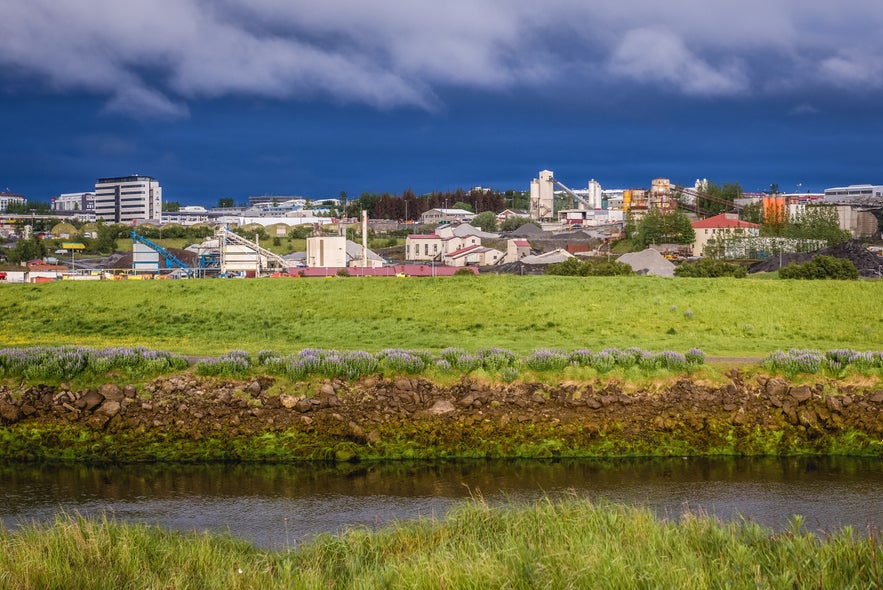 Ellidaardalur Valley is located within Reykjavik and is easily accessible by both public transport and car. It’s just a 10 to 15-minute bus ride from downtown, making it one of the city’s most convenient natural retreats.
Ellidaardalur Valley is located within Reykjavik and is easily accessible by both public transport and car. It’s just a 10 to 15-minute bus ride from downtown, making it one of the city’s most convenient natural retreats.
Once you arrive, a well-marked network of trails and paths makes the valley easy to navigate, with multiple entrances throughout the area.
By Public Bus
The following bus routes stop near various access points to the valley. The most convenient stops with direct access or just a short walk to the main entrances are marked:
-
Blesugrof (Blesugróf): 3, 11, 12, 17, 57, 58, 59 — direct access
-
Strengur / Sílakvísl (Silakvisl): 16, 19
-
Arbaer Open Air Museum (Árbæjarsafn): 12, 24
-
Rafstodvarvegur (Rafstöðvarvegur): 19
-
Laxakvisl (Laxakvísl): 19
-
Hraunbaer (Hraunbær) / Habaer (Hábær): 5
-
Fylkisvegur / Hraunsas (Hraunsás): 19, 26
-
Naefuras (Næfurás) / Reykas (Reykás) / Saudas (Sauðás): 5, 19
-
Smyrilsholar (Smyrilshólar) / Stelkholar (Stelkhólar): 3, 4
-
Gerduberg (Gerðuberg): 3, 4, 12, 17
-
Ogurhvarf (Ögurhvarf): 28
Tip: Use the Straeto app (Strætó app) or straeto.is to check real-time routes and plan your trip easily.
By Car
If you're driving, free parking is available near Arbaer Open-Air Museum (Kistuhylur street) and Arbaer swimming pool (Fylkisvegur street). These lots provide convenient access to walking paths and several main areas of the valley.
You might want to consider getting a car rental in Iceland for ultimate comfort and convenience.
By Self-Drive Tour
If you're exploring Reykjavik and its surroundings by rental car, Ellidaardalur Valley is easy to include as a stop. It’s just a short drive from central Reykjavik and works well as part of a flexible itinerary. Below are two self-drive tour options that include Ellidaardalur Valley:
-
7-Day Self-Drive Tour of the Complete Ring Road of Iceland: A scenic week-long adventure around the Ring Road, covering Iceland’s top natural wonders, including waterfalls, glaciers, lava fields, and coastal gems.
-
6-Day Self-Drive Holiday in Iceland: A focused journey through South Iceland’s dramatic landscapes, featuring iconic sites like Skogafoss Waterfall (Skógafoss), Jokulsarlon Glacier Lagoon (Jökulsárlón), and the Golden Circle.
You can also check out other top-rated self-drive tours in Iceland for complete flexibility and convenience.
Nearby Attractions To Visit
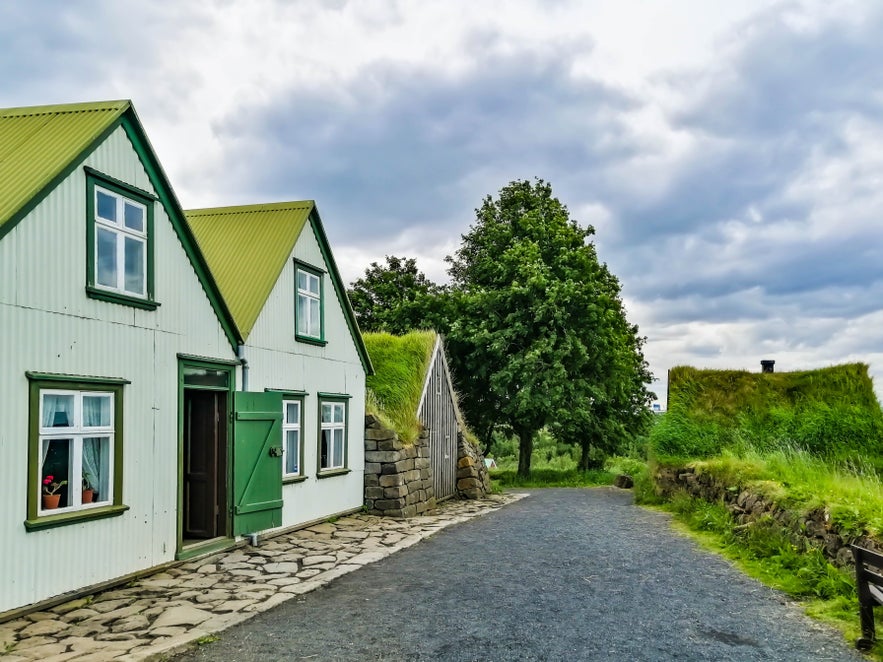 If you’re spending time in Ellidaardalur Valley, there are several great places nearby worth adding to your itinerary. Here are some of the top attractions within walking distance or a short drive:
If you’re spending time in Ellidaardalur Valley, there are several great places nearby worth adding to your itinerary. Here are some of the top attractions within walking distance or a short drive:
-
Arbaer Open Air Museum (Árbæjarsafn): A living museum with over 20 preserved buildings recreating a traditional Icelandic village. Step into old homes, a church, and a working farm for a hands-on look at local history.
-
Arbaer Swimming Pool (Árbæjarlaug): One of the best swimming pools in Reykjavik. It’s a family-friendly geothermal pool complex featuring hot tubs, an outdoor pool, water slides, and a children’s play area. Also includes a steam room and sauna.
-
Ellidaar Power Station Visitor Center (Elliðaárstöð): A former power station turned visitor center that explores energy, nature, and sustainability through playful, interactive displays. It’s one of Reykjavik’s most beautiful industrial buildings and offers insight into Iceland’s electricity history.
-
Chromo Sapiens Art Installation (Höfuðstöðin): An immersive art experience by Shoplifter (Hrafnhildur Arnardottir), known for her colorful, hair-like installations. It’s one of the best art museums in Reykjavik, where you can walk through vibrant tunnels and explore textures, light, and imagination. Includes a café on-site.
-
Ellidavatn Lake: A peaceful lake near the eastern edge of the valley, ideal for walking, relaxing, or fishing. The lake connects to the Ellidaa River and is a known spot for catching salmon, Arctic char, and brown trout.
-
Ellidi Cafe (Elliði kaffihús): A cozy riverside cafe near the Ellida Power Station Visitor Center, perfect for coffee, cake, or a light lunch. Open daily from 11:00 to 17:00, it’s easy to reach on foot, by car, or via nearby bus stops at the edge of the valley. Indoor seating and a nearby playground make it a great stop for families.
Note: Hofudstodin is quite a popular spot, so make sure to buy your Chromo Sapiens Art Installation entrance ticket in advance for a hassle-free visit.
Best Time to Visit Ellidaardalur Valley
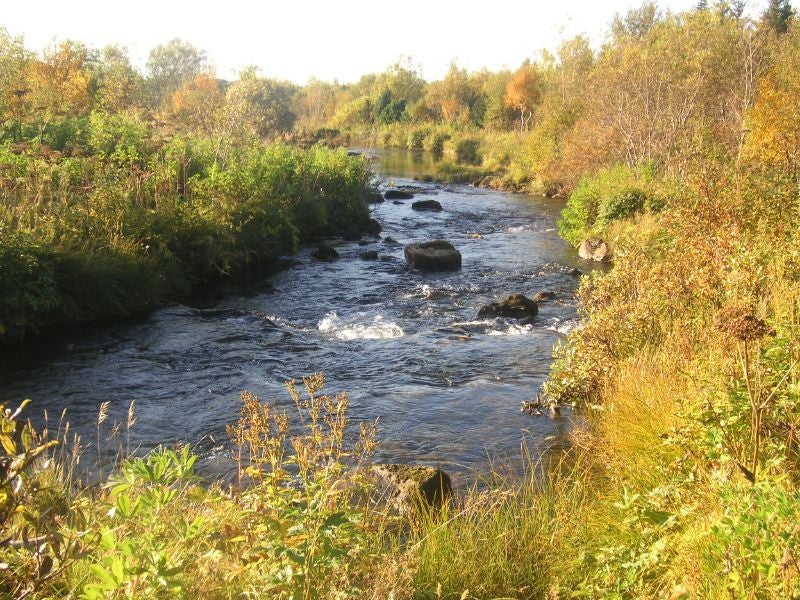 Ellidaardalur Valley is a year-round destination, with each season offering something unique. If you’re looking for the top things to do in Reykjavik, this hidden valley is one place you shouldn’t miss; just minutes from the city center and filled with nature, history, and quiet trails.
Ellidaardalur Valley is a year-round destination, with each season offering something unique. If you’re looking for the top things to do in Reykjavik, this hidden valley is one place you shouldn’t miss; just minutes from the city center and filled with nature, history, and quiet trails.
Summer, from June to August, is the best time for hiking, cycling, and picnicking. The trails are fully accessible, wildflowers are in bloom, birdlife is active, and you may even spot salmon running in the river. With long daylight hours and mild temperatures, it’s the ideal time to explore the entire valley.
Autumn brings fewer visitors, vibrant fall colors, and crisp air. It’s also the start of the northern lights season, as the nights grow darker and conditions become more favorable for aurora viewing.
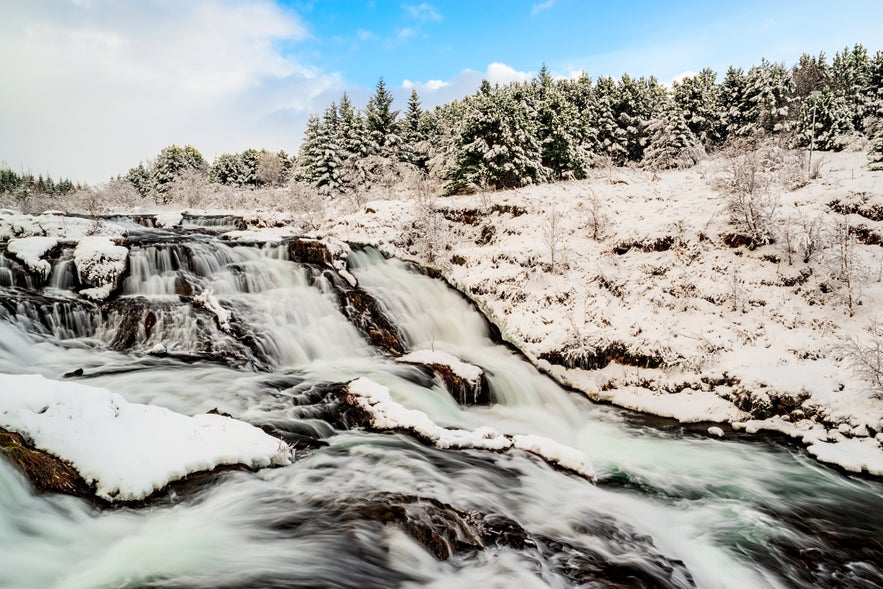 In winter, from November to March, the valley becomes a peaceful, snow-covered escape. Trails may be icy in parts, but the scenery is magical. Kermoafoss, the valley’s main waterfall, is especially beautiful in winter—partially frozen and framed by snow—and considered one of Iceland's must-see waterfalls during the colder months.
In winter, from November to March, the valley becomes a peaceful, snow-covered escape. Trails may be icy in parts, but the scenery is magical. Kermoafoss, the valley’s main waterfall, is especially beautiful in winter—partially frozen and framed by snow—and considered one of Iceland's must-see waterfalls during the colder months.
The valley is also one of the top spots near Reykjavik to see the northern lights, with low light pollution and easy access from the city, making it a favorite for locals and visitors alike.
Spring, from April to May, marks the return of plant life as the snow melts and the trails open up again. It’s a quiet time to enjoy the valley as birds begin to nest and early wildflowers appear along the paths.
Experience the Best of Ellidaardalur Valley
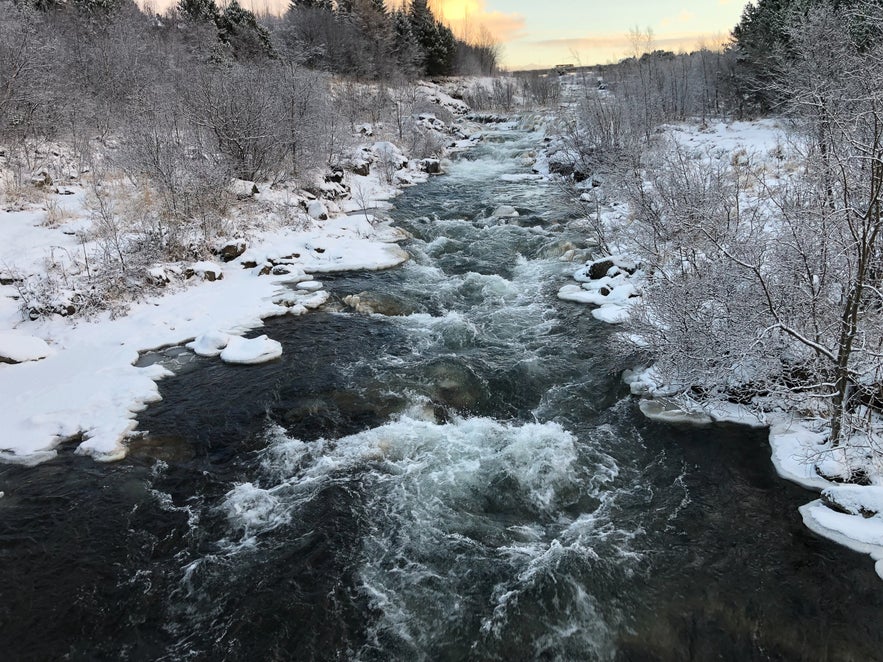 Ellidaardalur Valley is one of Reykjavik’s best-kept secrets, where lava fields, forest paths, waterfalls, and wildlife come together just minutes from the city center.
Ellidaardalur Valley is one of Reykjavik’s best-kept secrets, where lava fields, forest paths, waterfalls, and wildlife come together just minutes from the city center.
Whether you're after a peaceful walk, a scenic bike ride, or simply a quiet spot to unwind in nature, the valley offers a refreshing contrast to Reykjavik’s more urban highlights. It's a space where history, geology, and everyday local life quietly overlap.
If you enjoyed what Ellidaardalur Valley has to offer, you may also want to explore some of the best river tours in Iceland or join one of the top-rated hiking tours in Iceland. These experiences take you deeper into Iceland’s dramatic landscapes, offering adventure and insight far beyond the city limits.
